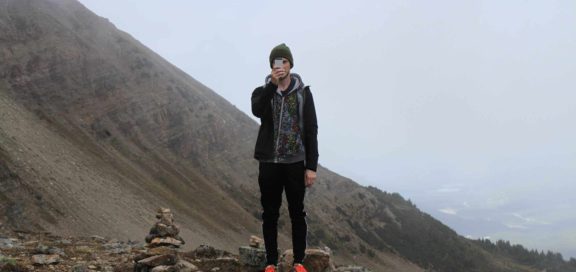A Portuguese individual has (at least for now) failed in his attempt to register the wordmark NEYMAR seeking protection for clothing, shoes and headwear. In its decision dated 14 May 2019 (Case-no. T 795/17), the European Court ruled that this application had been made in bad faith. According to the Court, the applicant’s intention was to unfairly free-ride on the internationally known soccer-player Neymar’s reputation and thus his market value.
Background to the NEYMAR case
In 2012, a Portuguese individual applied for registration of the wordmark NEYMAR claiming protection for clothing, shoes and headwear. The internationally known Brazilian soccer player of the same name opposed that application. Based on a provision of the European Trademark Regulation forbidding bad-faith trademark applications, he sought nullification of this application. European law does not define the term ‘bad faith’. The European Court (followed by German courts) assess bad faith upon a review of all circumstances of the individual case considering the following aspects:
- Did the applicant, at the time of the application, know that a third party was using the sign he sought to register for or a very similar sign in a EU member state, for identical or similar goods/services, and that therefore a risk of confusion between the two might arise? Should the applicant have known these circumstances?
- Was it the applicant’s intention to prevent the third party (user of the identical or confusingly similar trademark) from using their mark?
- Which level of legal protections do the third party’s sign and the mark for which registration is sought, enjoy?
According to general rules of procedure, the burden of proof that the application was made in bad faith lies with the party invoking that ground for refusal of the application.
The applicant defended himself against the allegation of bad faith with the argument that he did not know at the time of his application (in 2012) that Neymar was well known outside of Brazil, where he was playing for FC Santos at the time. According to him, the choice of ‘NEYMAR’ as a trademark was pure coincidence.
Neymar’s legal team countered this argument by submitting newspaper articles evidencing that Neymar had already been internationally recognized at the time of the application. There were discussions and strong speculations about a potential transfer to a European club. Evidence further showed that the applicant had simultaneously applied for registration of another trademark, namely IKER CASILLAS – likewise the name of an equally prominent soccer player.
The European Court’s decision
The European Court firstly cited the criteria listed above based on which an applicant’s bad faith may be determined. Based on these criteria the Court then reasoned that the applicant must have acted in bad faith. Against the background of the press coverage, the Court found it impossible that the applicant did not know the soccer player Neymar. According to the Court he had therefore had to assume that Neymar was (or would become) also well known in Europe. The Court believed that the applicant’s intention was to free-ride on the value associated with the name for his own purposes in selling products claimed under the trademark applied for. The simultaneous application of the IKER CASILLAS mark for the Court confirmed its assumption that the applicant was well versed in the international world of soccer. Choosing precisely this mark was no coincidence, the Court determined.
In its decision, the court emphasized that its argumentation regarding the subjective elements of the applicant’s motivation (bad faith) rested on objective facts (newspaper reports, the applicant’s behaviour).
The race to trademarks, and the risk of market exclusion as an issue of digitalisation
This ruling sheds light on an issue with far greater scope than affecting “only a few celebrities”.
Bad-faith trademark applications are a real problem and risk for any growing company. This applies just as much to physically growing companies as it does to companies that do business locally, but which are successfully internationally. The more digitized a company is or becomes, and the more visibility it (intentionally) gains on an international scale, as well, the higher the risk it is exposed to also with regard to its trademark rights.
The situation at the outset is always similar: An individual or company becomes successful in a particular industry segment and initially only in a limited geographic are. Caught up in the rush of its initial success and the many decisions that need to be taken quickly, legal issues that may have no immediate consequences fall by the wayside. An international strategy to protect the company’s or individual’s intellectual property (IP), i.e. its brand, designs and patents, is often not even considered. And even if IP protection is on the agenda, it may be a low-priority issue due to the considerable costs associated with the task.
This is, however, a mistake, and one that closes off potential markets to the company, destroys any corresponding possibilities for growth and – as in the case of celebrities – might block access to high-value sources of income.
Unlike the copying of physical (branded) products, which requires a significant amount of money, production as well as sales capacities, registering many types of IP (such as brands and designs) is a quick, cheap process. All an ‘IP thief’ really needs to be is fast; this is because it is easier than ever to monitor industries and research which companies, business ideas or individuals are currently gaining success either domestically or abroad. As digitalisation increases and with it (intentionally) the companies’ visibility, prospective ‘loot’ – in particular brands, designs and concepts – are presented on the digital silver platter. All the ‘IP thief’ has to do is grab it. He researches online whether the IP in question is already protected in profitable markets – and applies for its registration, if it is not.
The company that seeks to tap into new markets after reaching its domestic market potential with an established product or service, or the celebrity who wants to monetize their name upon gaining prominence, finds themselves abruptly brought up short by an obstacle. Trademark protection or the rights to a design in the form of an official registration is blocked; expansion comes to a standstill. Perhaps some investors will even jump ship, should the IP that reflects the value of the company or individual not be (immediately) available. Not every company or individual has the time and financial resources Neymar has to pursue the case through the legal system for seven years or longer. However, more importantly, not every case provides the excellent documentation that made it presumably easy to prove bad faith in the Neymar case, and thus entails good chances of winning a legal dispute.
In particular companies that have had only local or country-specific success so far often struggle to prove that they are known even beyond their own country (or continent, as the case may be) and have built up goodwill even abroad which the ‘trademark thief’ wanted to take for his own. In many cases, it is very difficult to prove this with objective third-party sources and not just internal documents from the respective company.
The company or individual is then put on the defensive, with the ultimate decision unclear. Value cannot be gained, and there may even be consequences for the core market.
The solution: Digitalisation and expansion require an IP strategy
Companies and businessowners need to understand international IP strategy as an insurance for their undertakings’ future. Just like entering into an insurance plan before any hint of risk appears, companies should not begin digitalisation and expansion without an IP strategy.
Well before a company or entrepreneur has even passed the threshold of international visibility and success – which make it a target to ‘IP thieves’ – it should already have secured IP rights and be prepared to continuously secure solid documentation for IP protection as part of its further expansion. The concrete steps to be taken depend on the individual company, markets and expansion strategy. There is no ‘one size fits all’ solution.
We help you assess the IP risks for your company’s development and will assist you in developing strategies for protecting your company’s assets.








